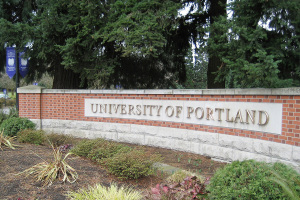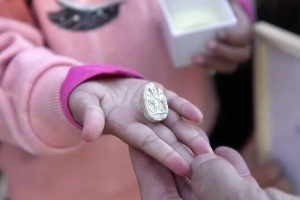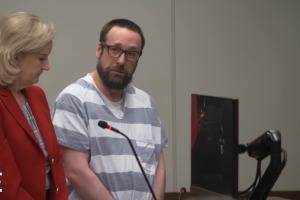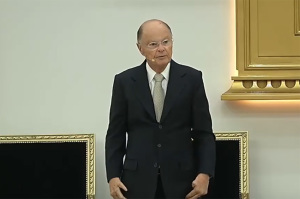Democratizing Evangelism in an eWorld
Outreach in the electronic world is needed as people become increasingly dependent on technology to communicate, said Christian thinkers at a conference focused on the subject this week.
While the good news should never change, methodologies used to communicate the message must change with the times, agreed attendees of the Great Commission Research Network's annual conference, which concluded Thursday. The conference, titled "Outreach in an eWorld," focused on how the average, local church can use the electronic medium to share the Good News.
"The electronic medium is becoming a more powerful tool for good or for bad," said Bob Whitesel, president of the Great Commission Research Network, to The Christian Post Thursday. "And the Church needs to know how to wield it for good and it needs to know how to take a stand against the bad."
The Great Commission Research Network (GCRN) is a group of Christian writers, researchers, professors and practitioners that study how to have more effective evangelism.
Whitesel, who is also associate professor of Christian Ministry & Missional Leadership at Wesley Seminary at Indiana Wesleyan University, used his university as an example of how technology-based communication can be effective.
Indiana Wesleyan University is the largest private school in the state of Indiana and has several thousand online students, he highlighted. Research has shown that the education received by online students is equal if not slightly better than that received face-to-face.
"If that's the case, then let's study how churches can go out and use electronic forms to share the Gospel," Whitesel said.
During the three-day event, innovative Christian thinkers and researchers shared ideas about how churches can harness technology to share the Gospel.
Rusty Reuff, former vice president of Electronic Arts and Pepsico, said twitter and facebook are getting less popular, but peer-to-peer communications – like the 3-D world of Second Life – and videos are becoming more popular. He advised churches to, instead of just putting text in the "about us" page of their websites, make a video introducing the church and walking people through the building to make it more lifelike.
But perhaps the most eye-opening presentation, at least for Whitesel, was that of Russ Gunsalus, co-leader of the design team that created the new online seminary for Wesley Seminary at Indiana Wesleyan University.
Gunsalus' presentation was called, "New Life in Second Life: Can the Church Grow in Virtual Worlds?" He talked about the opportunity to share the Gospel in Second Life, a virtual world where "residents" interact with each other through avatars. Residents can explore, meet each other, participate in activities, create and trade virtual property and services, and travel the virtual world.
"The thing that grabbed me the most that I did not expect is that virtual reality is becoming a bigger issue and a greater preference among people to get knowledge," Whitesel remarked. "So we are moving from text-based knowledge back to a spoken- and action-based knowledge."
In Second Life, residents can attend virtual church and ask questions that they would not dare to ask in real life. Whitesel sees this as an opportunity for those called to be missionaries in the virtual world to present the Gospel through outreach in the eWorld.
Whitesel noted that the good news about electronic outreach is that it is much cheaper than other forms of evangelism.
"It is kind of democratizing evangelism," he observed. "More and more, small churches can do evangelism on that level because it is less expensive."
On Wednesday, popular evangelical researcher Ed Stetzer joined a live panel at the event via Skype to demonstrate that technology can now allow people to have as good a dialogue with someone through the internet as in person.
The Great Commission Research Network has a partnership with Indiana Wesleyan University and its journal is published by Biola University. About 140 people, including some from Africa, attended this year's GCRN annual conference.





























